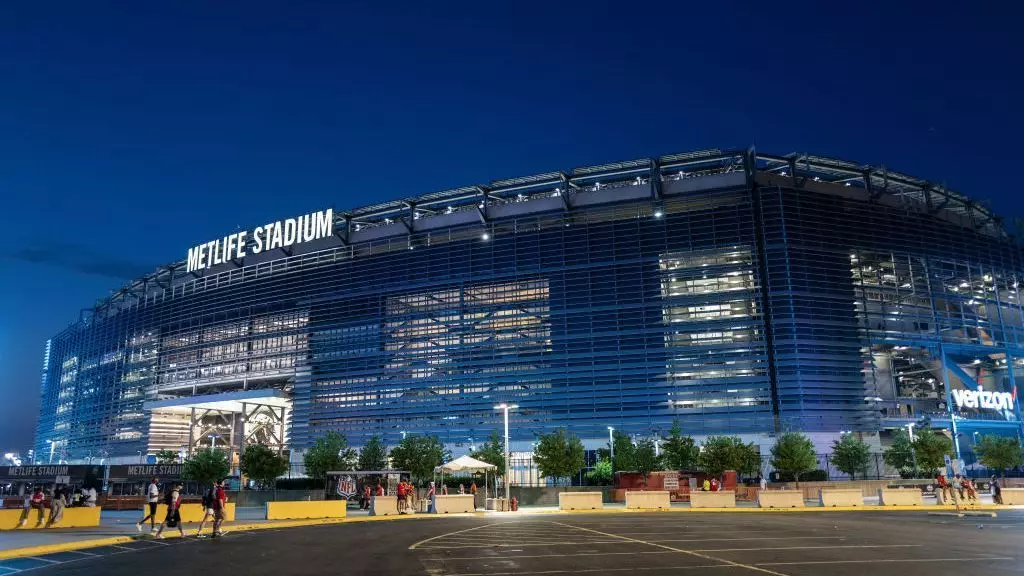In a monumental announcement, FIFA has unveiled plans for the 2025 FIFA Club World Cup, set to kick off on June 15 and culminating with the final at the iconic MetLife Stadium in East Rutherford, New Jersey, on July 13. This landmark tournament marks a pivotal moment in football history, as it will feature matches across 12 prominent venues across the United States. From the historic Rose Bowl in Los Angeles to the bustling atmosphere of Atlanta’s Mercedes-Benz Stadium, these sites will collectively showcase the depth and diversity of American culture while celebrating the global sport of football.
That this significant event is set in the U.S. reflects not only the country’s growing influence in world football but also a commitment to expanding the game’s reach. FIFA President Gianni Infantino has emphasized this point, describing the event as a starting point for a “new era” in club football. With 32 of the world’s most prestigious clubs participating, the tournament promises not just electrifying matches but also a distinct opportunity for teams from across continents to compete on an unparalleled stage.
The selection of venues has been primarily centered on the East Coast, an intentional move to sidestep potential scheduling conflicts with the Gold Cup, another major football tournament occurring concurrently. This strategic decision indicates FIFA’s commitment to optimizing the experience for players and fans alike. By avoiding overlaps in high-stakes matches, FIFA is bolstering its organizational integrity and demonstrating respect for the physical and logistical limitations faced by the clubs and players involved.
Moreover, including Seattle’s Lumen Field as a host venue – a last-minute adjustment prompted by the Seattle Sounders’ qualification – showcases FIFA’s ongoing adaptability in the face of changing circumstances. Such flexibility is crucial in the modern sports landscape, where the specifics of tournament logistics can shift rapidly.
However, this ambitious plan has not been free from criticism. Major football organizations, including FIFPRO and the Professional Footballers’ Association in England, have voiced concerns regarding the congested schedule. They argue that the timing of such a tournament – typically during the summer window primarily reserved for international matches – could overextend players, jeopardizing their health and performance levels. The Premier League’s skepticism adds another layer of complexity to an already challenging landscape, illustrating the tension between commercial aspirations and the welfare of athletes.
Despite these challenges, Infantino’s decision to proceed with the 2025 tournament validates FIFA’s commitment to fostering a more inclusive global football community. By expanding the number of participating clubs from seven to 32, FIFA aims to integrate underrepresented regions, including Africa, Asia, and Oceania, into mainstream football narratives. This change enhances the tournament’s prestige and broadens its appeal, encouraging broader global recognition of football talent and teamwork.
The 2025 FIFA Club World Cup is not just an athletic competition; it is also an initiative that promises to inspire hope and passion for football in various communities around the world. By creating platforms that allow underrepresented clubs to confront traditional powerhouses, FIFA is attempting to redefine narratives within club football, making it more accessible and competitive.
Moreover, Infantino’s rhetoric reflects a strategic approach to the future of football, wherein the tournament serves as a vehicle for economic growth, cultural exchange, and social responsibility. By overlapping local engagement initiatives with football events, FIFA proposes a long-lasting legacy that transcends the mere outcome of matches.
As we look forward to the 2025 FIFA Club World Cup, it is crucial not only to celebrate its potential but also to critically engage with the challenges it faces. The success of this event will hinge on FIFA’s ability to navigate the complexities of player welfare, organizational logistics, and the expectations of global football fans. If done right, the tournament can indeed represent a significant leap forward for club football, uniting fans and players from around the world in a collective celebration of the beautiful game. With a blend of excitement, skepticism, and hope, the world of football eagerly awaits this momentous occasion.




Leave a Reply